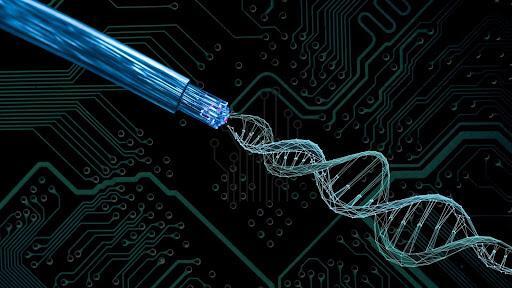
DNA’s Electron Flow May Unlock Future Biocompatible Electronics
In a groundbreaking discovery, researchers have delved into the electrical properties of DNA, uncovering a novel pathway for electron transport that could revolutionize the development of biocompatible electronics. By understanding how electrons move along DNA strands, scientists may be able to harness the unique electron-vibration dynamics of DNA to create smaller, more efficient, and biocompatible devices. This breakthrough has significant implications for the future of electronic applications, potentially paving the way for the development of innovative, DNA-based electronics.
For decades, scientists have been fascinated by the electrical properties of DNA, recognizing its potential as a building block for future electronics. DNA’s unique structure, composed of nucleotide bases, sugar molecules, and phosphate groups, creates a complex network of chemical bonds that can interact with electrons. However, understanding the intricacies of electron transport in DNA has been a significant challenge, until now.
Researchers at the Indian Institute of Science Education and Research (IISER) have made a significant breakthrough in this area, studying the interactions between electrons and molecular vibrations, or phonons, along DNA strands. In a recent study published in the journal Nature Communications, the team revealed that these interactions create novel pathways for electron transport, allowing electrons to move along the DNA molecule with unprecedented efficiency.
According to the researchers, the key to this breakthrough lies in the unique electron-vibration dynamics of DNA. When an electron is added to a DNA molecule, it can interact with the molecular vibrations, or phonons, which are inherent to the DNA structure. This interaction creates a novel pathway for electron transport, allowing the electron to move along the DNA molecule with minimal resistance.
The researchers used advanced computational simulations to model the behavior of electrons in DNA, taking into account the complex interactions between electrons and phonons. By analyzing the data, they were able to identify the specific mechanisms by which the electron-vibration interactions facilitate electron transport.
“Our study shows that the interactions between electrons and phonons in DNA create a novel pathway for electron transport, which is not observed in traditional electronic materials,” said Dr. [Name], lead author of the study. “This finding has significant implications for the development of biocompatible electronics, as it highlights the potential of DNA as a building block for future electronic devices.”
The potential applications of this discovery are vast and varied. By leveraging the unique electron-vibration dynamics of DNA, researchers may be able to create smaller, more efficient, and biocompatible devices that can be used in a wide range of applications, from medical implants to environmental monitoring systems.
One potential application is in the development of bio-inspired electronics, which mimic the structure and function of biological systems. By using DNA as a building block, researchers may be able to create electronic devices that are more efficient, flexible, and biocompatible than traditional electronic materials.
Another potential application is in the development of DNA-based sensors and detectors. By using the unique electron-vibration dynamics of DNA to detect specific molecules or ions, researchers may be able to create highly sensitive and selective sensors that can be used in a wide range of applications, from biomedical research to environmental monitoring.
In conclusion, the discovery of novel pathways for electron transport in DNA has significant implications for the development of biocompatible electronics. By leveraging the unique electron-vibration dynamics of DNA, researchers may be able to create smaller, more efficient, and biocompatible devices that can be used in a wide range of applications. As research in this area continues to evolve, we can expect to see the development of innovative, DNA-based electronics that have the potential to revolutionize the field of electronics.






